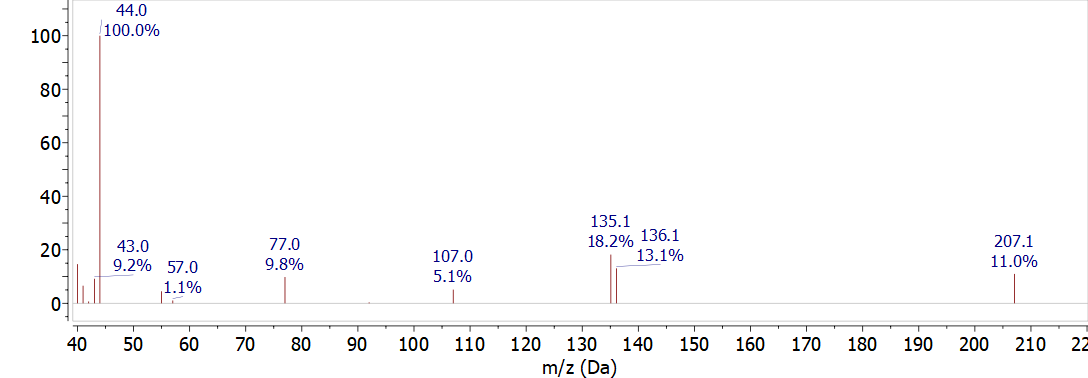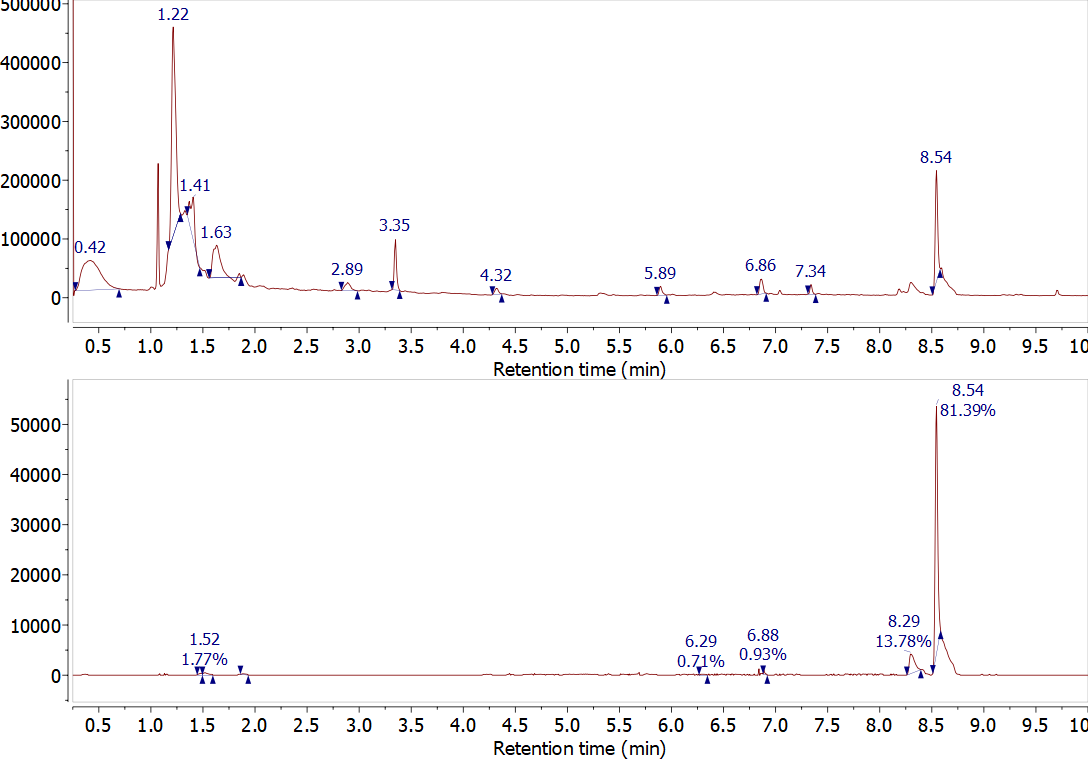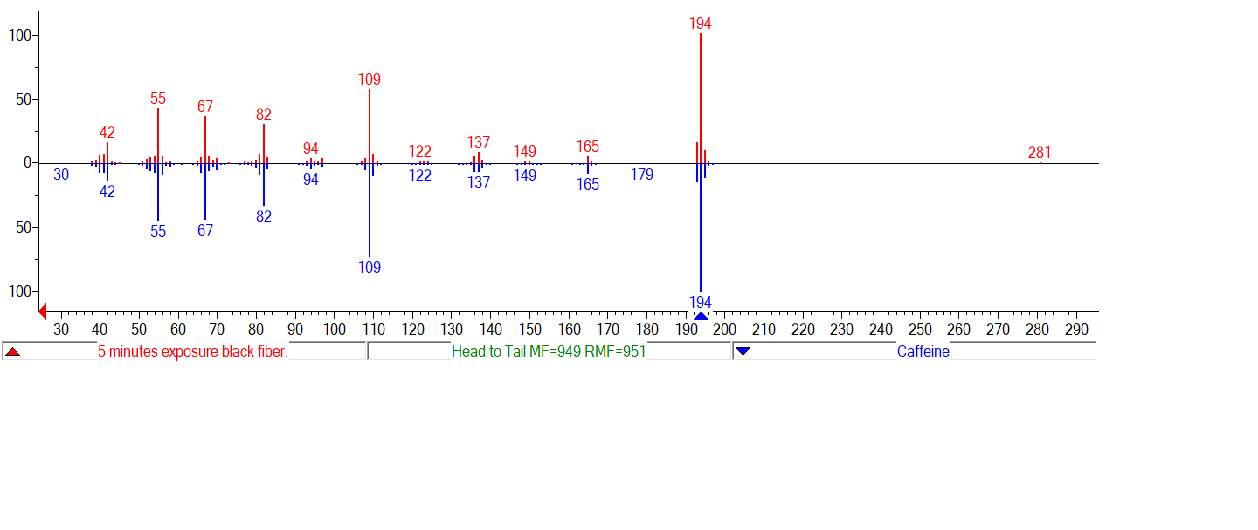5.5: Data System
- Page ID
- 440452
The final component of a mass spectrometer is the data system. This part of the instrument has undergone revolutionary changes. It has evolved from photographic plates and strip chart recorders to data systems that control the instrument, acquire hundreds of spectra in a minute and search tens of thousands of reference spectra to identify an unknown. Important features of the data system include control over data acquisition and effective data processing.
Critical features for data processing include averaging, subtracting, and deconvolution of spectra. Figure \(\PageIndex{1}\) shows the background spectra for a mass spectrometer using 70 eV electron ionization. The peak at 44 m/z corresponds to carbon dioxide. Water (18 m/z), nitrogen (28 m/z), and oxygen (32 m/z) are normally observed if they are included in the mass range scanned by the spectrometer. The peak at 207 m/z is from a siloxane compound that is commonly observed in mass spectra and is likely caused by the GC septum used for injection. Other background peaks may be carryover from previous experiments or from the vacuum pump oil. It is a good idea to be familiar with the background peaks and levels for an instrument since changes in the background often indicate possible problems with the instrument.

The data processing software for the system can be used to reduce the background signal in mass spectrum. Figure \(\PageIndex{2}\) shows two mass spectra from the same time in the chromatogram. The top spectrum is the raw data from the spectrometer. In the bottom spectrum the background signal was subtracted. The background peaks at 77 m/z and 207 m/z are removed and a large number of smaller peaks are also eliminated.

Another important data processing feature is shown in Figure \(\PageIndex{3}\). This figure shows data for the analysis of caffeine by GC/MS. The top trace is the total ion chromatogram – the sum of the intensity for all masses as a function of time. The bottom trace is the extracted ion chromatograph that only shows the intensity of the 194 m/z signal as a function of time. Since caffeine is the only compound with an ion observed at 194 m/z this is the only peak in the chromatogram. This chromatogram shows a significant reduction in the background noise. This chromatogram was extracted from a full scan at each time in the chromatogram. It is also possible to set up the spectrometer to only monitor a single ion, this is called selective ion monitoring and the technique can significantly enhance the sensitivity of a mass spectrum analysis.

Figure \(\PageIndex{3}\): Comparison of total ion chromatagram (top) and the extracted ion chromatagram for 194 m/z (bottom). (Copyright; Van Bramer via source)
The final data processing technique for discussion here is database searching. Figure \(\PageIndex{4}\) shows the library search results using NIST MS Search 2.0 for the caffeine peak at 8.54 minutes in the chromatogram. After sending the mass spectrum to the search routine, the program displays likely matches and shows the reference spectra for easy comparison. Search routines like this make it possible to compare an unknown with a large database of target compounds for quick identification.


